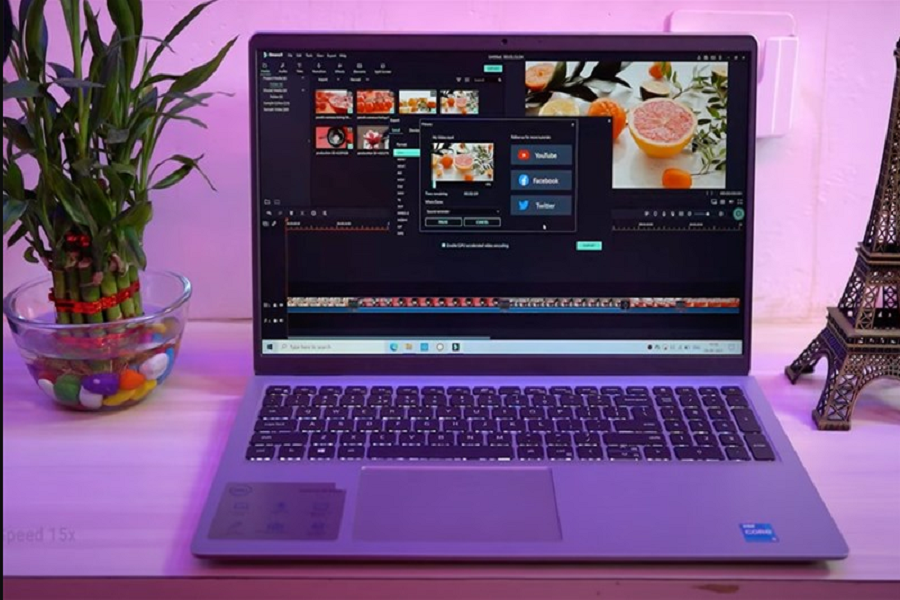When selecting a laptop for photo editing, certain specifications and features are crucial to ensure a smooth and efficient workflow. Among these, a powerful processor is paramount. A multi-core CPU, such as Intel Core i5 or i7, or their AMD counterparts, can significantly enhance performance, enabling the simultaneous handling of various tasks without lag. This is essential as photo editing software often requires robust processing power, especially when working with high-resolution images or applying multiple effects.
Understanding the Requirements for Photo Editing
Another critical component is sufficient RAM. For photo editing, a minimum of 8GB is recommended, but 16GB or more is ideal for optimal performance. Ample RAM allows for smooth multitasking and loading of large image files, ultimately improving efficiency during the editing process. In addition to RAM, a dedicated graphics card is essential. Budget laptop for photo editing equipped with a GPU can handle advanced rendering tasks and improve the overall graphical output, which is particularly beneficial when working with high-definition images and intricate visual effects.
Furthermore, the display quality cannot be overlooked. A high-resolution screen, preferably with at least Full HD (1920×1080 resolution), ensures detailed image viewing and editing. Color accuracy is another vital aspect; a laptop that covers a wide color gamut, such as sRGB or Adobe RGB, is preferred as it guarantees that the colors in edited photos are true to reality. Lastly, ample storage capacity is necessary for storing large image files and software applications. Solid State Drives (SSDs) are recommended over traditional Hard Disk Drives (HDDs) due to their speed and reliability, which can significantly improve loading times and overall performance.
Top Budget Laptops for Photo Editing in 2023
In the expansive market of budget laptops, several options emerge as strong contenders for photo editing tasks in 2023. These laptops seamlessly combine affordability with performance, catering specifically to creators who do not wish to compromise on quality while being mindful of their budgets. Here is a curated list of budget-friendly laptops, each reviewed for their specifications, performance, and price.

The Acer Aspire 5 stands out with its AMD Ryzen 5 processor and 8GB of RAM, making it suitable for running demanding photo editing software like Adobe Photoshop and Lightroom. With a 15.6-inch Full HD display, the color accuracy is impressive for this price range, making it a reliable choice for photographers. The Aspire 5 tends to be on the heavier side, which may impact portability.
Another excellent option is the Lenovo IdeaPad 3. This laptop has an Intel Core i5 processor and a vibrant 14-inch display, delivering sharp images that are essential for photo editing. The IdeaPad 3 is lightweight and portable, making it a good choice for creatives on the go. However, its battery life might not match that of some competitors, which is a consideration for extended work sessions.
The HP Pavilion x360 offers versatility with its convertible design, ensuring that it functions as a laptop and a tablet. With an Intel Core i3 processor and 8GB of RAM, this laptop may not possess the highest specifications, but it is adequate for basic photo editing tasks. Its touchscreen functionality adds a layer of interactivity that can enhance the editing process, yet it lacks in pure processing power compared to its peers.
Lastly, the Dell Inspiron 15 boasts a commendable display and an Intel Core i5 chipset, striking a balance between performance and affordability. Its build quality ensures durability, but it does come with a heft, which might be less desirable for those who value portability. Collectively, these budget laptops are well-equipped to handle the challenges of photo editing while remaining within budget constraints, enabling users to enhance their creative workflows.
Related Articles: Ways to edit photos
Tips for Maximizing Performance on a Budget Laptop
Maximizing the performance of a budget laptop for photo editing requires a strategic approach, focusing on both software and hardware enhancements. First and foremost, optimizing software settings can significantly improve performance. Ensure that your photo editing software is updated to the latest version, as updates often include performance improvements and bug fixes. Adjust the settings to use lower resolution previews and disable unnecessary features during intensive tasks to free up system resources. This simple adjustment can lead to a smoother editing experience.
In addition to software optimizations, using external peripherals can greatly enhance your photo editing workflow. Consider connecting an external monitor to your budget laptop. A larger display allows for better visibility and greater workspace, making it easier to focus on detail-rich edits. Furthermore, utilizing an external storage device can alleviate the burden on your internal drive, improving performance by providing faster read and write speeds. External hard drives and SSDs are ideal for storing large image files, enabling quicker access during editing sessions.
Managing system resources effectively is another crucial aspect of maintaining performance. Close background applications that are not in use; this will free up CPU and RAM for photo editing tasks, which can be resource-intensive. Additionally, routinely clearing temporary files and optimizing storage can prevent slowdowns. Regular maintenance, such as updating drivers and running diagnostic tools to identify issues, will ensure that your laptop operates at peak performance over time.
Lastly, consider implementing proper maintenance practices for longevity. Keeping the laptop clean, ensuring adequate ventilation, and protecting it from overheating are all vital for sustaining its performance during intensive tasks. By following these practical tips, users can enhance their photo editing experience on a budget laptop, maximizing the potential of their investment in a cost-effective manner.

